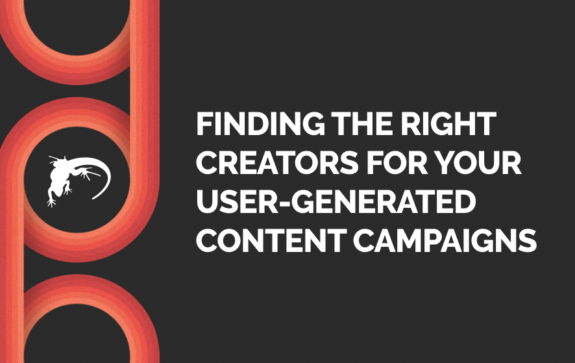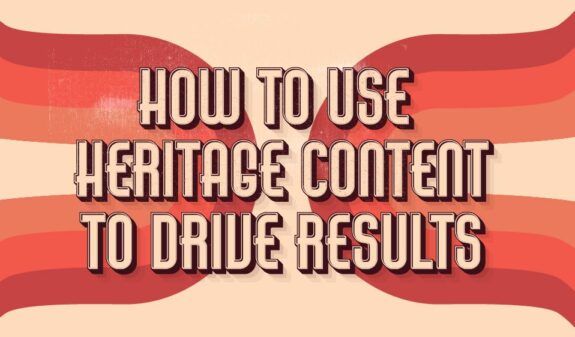How to Effectively Brief UGC Influencers for Marketing Campaigns

The realm of digital marketing is in perpetual flux, and in this dynamic landscape, user-generated content (or UGC) influencer marketing campaigns have carved a formidable niche. With over 90% of people saying they value UGC and use it in making purchasing decisions, finding top-tier UGC influencers and knowing how to write a content brief has never been more crucial to an effective digital marketing campaign.
Like every powerful tool, the efficacy of UGC content and influencer marketing strategies hinges on understanding your target audience and communicating your goals through a well-written and compelling creator brief.
What is a Content Brief?
To be specific, a content brief is a document that outlines in detail the objectives, target audience and persona, key messages, keyword research, and other essential elements that should be included when developing content.
Within the marketing industry, well-written and effective content briefs serve as guides for content creators, such as writers, designers, or video producers. When you write a content brief, the goal is to ensure that the content produced aligns with the goals and expectations of your business, client, or project.
The Pillars of the Content Creation Process
When developing content and the directive content brief itself, be sure to consider these four components of an unstoppable marketing strategy:
Understand the Target Audience
Every piece of UGC content is a dialogue with the audience. A refined understanding of the audience, their aspirations, pain points, and inclinations is foundational. The creative brief questions should be oriented to unravel these nuances, paving the path for UGC that’s not just seen but felt and influencer marketing campaigns that transcend the ordinary.
Align with Brand Ethos
Alignment with the brand ethos is non-negotiable. While celebrating the creator brand, the UGC marketing campaign should be a seamless extension of the brand narrative. A balanced synergy between the creator’s authenticity and the brand’s essence ensures UGC content that’s both coherent and compelling.
Empower Your Creators
An empowered creator is essential for influential UGC content. Freedom, within the framework of the brand ethos, unleashes creativity. Influencer briefing should be inspirational, a catalyst that ignites the creator’s imagination and translates into UGC and influencer marketing campaigns that are magnetic and memorable.
Evaluation Metrics
A UGC marketing campaign is as effective as its evaluation. Metrics, qualitative and quantitative, should be ingrained in the influencer marketing strategy. It’s not just about the numbers but the narrative, the engagement, and the resonance. The evaluation is not an endpoint but a continuum, with each data point a step to refine and revitalize the UGC content.
Creating a UGC Influencer Brief That Gets Results
Developing a creative and detailed brief for a UGC influencer or creator is essential to ensure the content aligns with your message, brand, and goals. Here are the steps to follow when creating a top-performing creator brief for your UGC influencer:
1. Define Your Brand Strategy and Objectives
- Create Clear Goals — Clearly define what you want to achieve with the content, e.g., brand awareness, engagement, conversions, etc.
- Metrics — Determine how success will be measured within the context of your brand. Will it include views, likes, shares, sales, or something else?
2. Identify Your Target Audience, Desired Customers, and the Social Media Platforms They Frequent
- Demographics — Clearly understand your ideal customer persona, including what age groups identify with your product. What gender(s), geographic locations, and interests are ‘your people’? Is that stagnant, or has it changed over time as your product or service (and target audience) has matured?
- Psychographics — Your ideal customer’s psychographics maybe even more important than demographics. What are their values, attitudes, and lifestyles? Brands that embrace values and social movement can be particularly successful — Ben & Jerry’s ‘Justice Remixed’ flavor, Petco’s efforts to support dog rescue, and Dove’s campaign celebrating women of every size, color, shape, and ability.
3. Outline Your Optimal Content Specifications
- Choose the content format that promises maximum results, e.g., video, image, blog, podcast, etc. This will help define your best choices for UGC marketing influencers.
- Decide on the optimal length or size of the content you want to use. For example, define the duration for videos, word count for blogs, or image dimensions.
- Focus on the optimal social media platforms where the content to be published or shared will be most effective. Whether you use Facebook or TikTok, LinkedIn or Twitter/X will be determined by the type of product or service you offer and your user demographics.
4. Determine Your Key Messages and Themes
- According to your brand strategy, decide what key messages you want to convey and the best theme to illustrate your business.
- Define the tone and style that aligns with your brand. For example, whimsical content on TikTok won’t serve you well if you offer a professional brand or service.
5. Concentrate on Your Brand Guidelines
- What are the visual elements, e.g., logo, color scheme, typography, etc., that you want to use to convey your message? If you have corporate guidelines in place—great! If not, now is a great time to engage a design agency, like Lounge Lizard Worldwide, to create a comprehensive visual brand.
- Likewise, defining your ‘voice,’ the specific style or manner of expression of your brand, will be a crucial element for your UGC influencer marketing campaign.
6. Define the Creative Freedom Available to the creator
- Allowing UGC creators freedom and flexibility to bring their style and creativity ensures authenticity. Decide on the parameters upfront so there aren’t any questions later. This will improve the type of content and the quality.
7. Legal and Ethical Guidelines
- Usage Rights will be an essential component. Clarify who owns the content now and in the future and where/how your content will be used.
- Ensure creators disclose endorsements or partnerships, complying with legal requirements.
8. Timeline
- Deadlines will be necessary. Be sure to specify when the content should be created, reviewed, and published.
- Define an established feedback loop—outline the process for revisions and approvals so there is no question during the UGC creation or campaign.
9. Budget and Compensation
- Determine your budget and payment terms for both the content creator and any pay-per-click costs, if applicable. Also, define any additional incentives or performance-based bonuses available for the creators.
10. Support and Resources
- When setting up a successful UGC marketing campaign, it’s vital to supply the content creator with all the materials or resources the creator might need, plus a point of contact for questions or clarifications.
11. Evaluation and Feedback
- As with any contracted service, it’s important to review results and provide feedback to the creator. Before the campaign kicks off, it is the perfect time to collaborate on the criteria used for evaluating the content to ensure everyone is clear on expectations and performance.
Sample Content Brief Template
We recommend using a content brief example similar to this example so that you can be assured of quality content that’s delivered according to your specifications.
1. Objective
- Goal: Increase brand awareness
- KPIs: 10k views and 1k shares per month
2. Audience
- Age 18-35, interested in sustainable fashion
3. Content Specs
- Type: Video
- Length: 2-3 minutes
- Platform: Instagram, YouTube
4. Key Messages
- Eco-friendly, affordable, stylish
- Tone: Inspirational, Empowering
5. Brand Guidelines
- Visuals: Logo inclusion, brand colors
- Voice: Positive, aspirational
6. Timeline
- Draft: November 1
- Final: November 10
7. Budget
- $500 per content piece
- Incentive: Bonus for high engagement
This brief can be customized and expanded according to your specific needs and expectations, ensuring it’s detailed yet concise enough to effectively communicate your requirements to the UGC creator.
Keep an Eye Out for Pain Points
Many brands can find problems with poor-performing campaigns by tracing back to a flawed UGC brief or influencer briefing. Creators, drenched in potential, are often directionless, not for a lack of talent, but an inadequate brief. Others are stifled creatively, leading to ineffective UGC content that simply doesn’t resonate with the target audience.
The pain points are palpable. Poorly articulated objectives, ambiguous creator briefs, and a lack of understanding of the creator brand identity often result in UGC and influencer marketing campaigns that miss the mark.
The Anatomy of an Effective UGC and Influencer Brief
1. Clarity and Precision
Precision is the linchpin of a compelling UGC brief. Well-articulated objectives underpin the best influencer marketing campaigns. Creators should not be left without clear direction. Every UGC marketing campaign’s goals, expectations, and success metrics should be transparent and measurable.
2. Embrace the Creator Brand Identity
Recognizing and embracing the creator brand is pivotal. Creators are not mere conduits but dynamic entities, each with a distinct identity. Tailoring the UGC brief and honoring your content creator’s uniqueness ensures UGC content that’s authentic, engaging, and resonant.
In the End
In the eclectic world of digital marketing, UGC and influencer marketing campaigns are not just strategies but art. They weave the narrative that transforms audiences into communities. A meticulously crafted UGC brief and influencer briefing are not just directives but enablers, catalysts that unleash the unbridled potential of creators.
It should be a user journey to visibility and trust that turns audiences into customers and advocates.
Contact Lounge Lizard to learn more about building a successful UGC content strategy and positioning your business to capture and convert more of your target audience.






